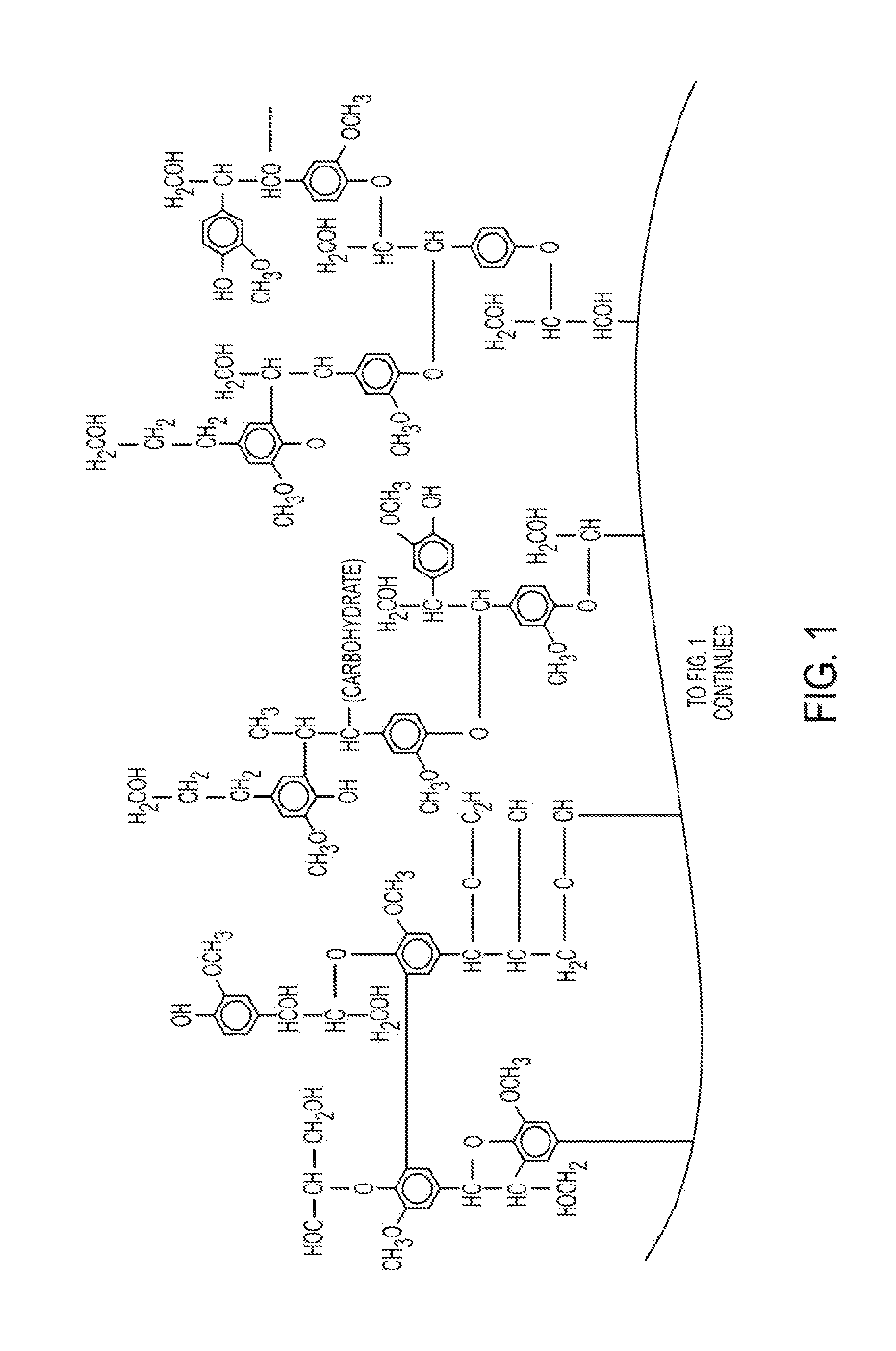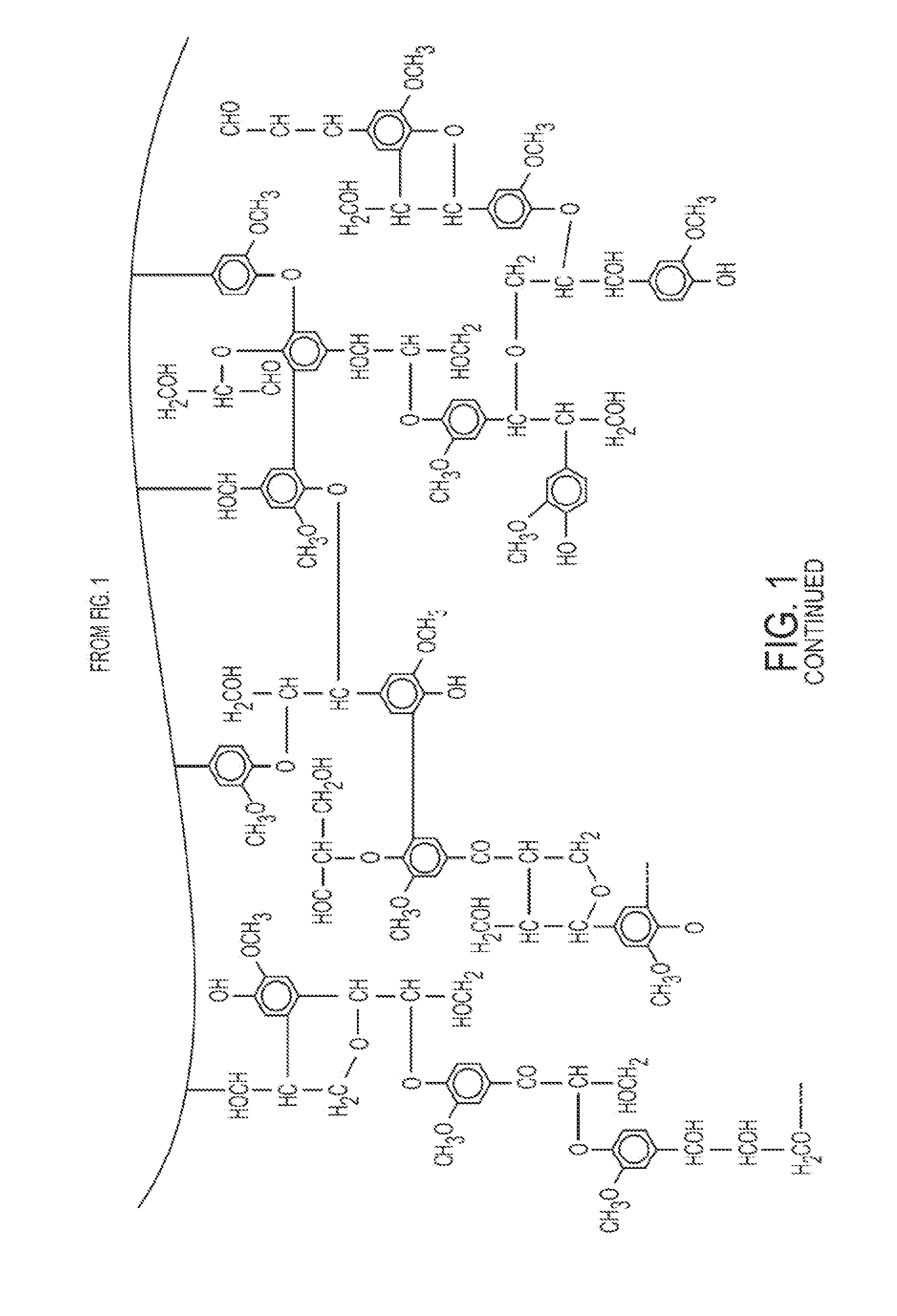Tailorable lignosulfonate carbonate adhesives
a technology of lignosulfonate carbonate and adhesive, which is applied in the direction of liquid transfer devices, liquid/fluent solid measurement, rigid containers, etc., can solve the problems of high cost of such adhesives, volatile chemicals, and toxic to humans and animals, and achieves the effects of improving the stability of adhesives, and improving the adhesion strength
- Summary
- Abstract
- Description
- Claims
- Application Information
AI Technical Summary
Benefits of technology
Problems solved by technology
Method used
Image
Examples
example 1
Preparation of Lignosulfonate Adhesives
[0040]The first component of the adhesive system is produced by reacting sulfonated lignin with reduced lysine and poly(ethylene glycol) having chain length, n1=4. The reaction is carried under Mitsunobu conditions with triphenyl phosphine and diethyl azodicarboxylate as Mitsunobu reagents. The concentrations of individual reactant compounds are adjusted such that the ratio (A:S) of number of amine groups to number of sulfonate groups is 1:2 and the ratio (H:S) of number of hydroxyl groups to number of sulfonate groups is about 1:4.
[0041]The second component of the adhesive system is produced by reacting sulfonated lignin with poly(ethylene glycol) having chain length, n2=6. The reaction is carried under Mitsunobu conditions with triphenyl phosphine and diethyl azodicarboxylate as Mitsunobu reagents. The concentration of sulfonated lignin and poly(ethylene glycol) is adjusted such that the ratio of number of hydroxyl groups to number of sulfona...
examples 2-6
Variations in Lignosulfonate Adhesives
[0043]Multiple compositions are achieved by varying the chain lengths n1 and n2, and the ratios A:S, H:S, and A:C as described herein. It is preferable that the ratio A:C exceeds 1:1 in order to quench all of the HCl liberated when the two components react. The following table provides some examples of the various compositions.
Examplen1n2A:SH:SA:C2581:21:51:13741:31:41:1486 1:2.51:61.25:1 51051:41:22:16881:31:31:1
example 7
Packaging of Lignosulfonate Adhesives
[0044]A double bore syringe is used for packaging the two-component adhesive. The first component is filled into one of the bores of the syringe and the second component is filled into the other bore. The syringe has two plungers—one for each bore—that are connected at the portion that extends outside of the bores such that when the connected portion is depressed, both the plungers are pushed down by the same distance. When the connected portion of the plungers is depressed, the amount of the two components that is delivered is in ratio of the size of the two bores of the syringe. The ratio of size of the two bores can be adjusted based on the specific composition of the two components, and the H:C and A:C ratios. The two components can then me mixed to for the adhesive.
[0045]The two components can also be packaged in two separate syringes. In such packaging, the volume of each component dispensed from the respective syringe is controlled manuall...
PUM
| Property | Measurement | Unit |
|---|---|---|
| pressure | aaaaa | aaaaa |
| temperature | aaaaa | aaaaa |
| adhesive | aaaaa | aaaaa |
Abstract
Description
Claims
Application Information
 Login to View More
Login to View More - R&D
- Intellectual Property
- Life Sciences
- Materials
- Tech Scout
- Unparalleled Data Quality
- Higher Quality Content
- 60% Fewer Hallucinations
Browse by: Latest US Patents, China's latest patents, Technical Efficacy Thesaurus, Application Domain, Technology Topic, Popular Technical Reports.
© 2025 PatSnap. All rights reserved.Legal|Privacy policy|Modern Slavery Act Transparency Statement|Sitemap|About US| Contact US: help@patsnap.com



